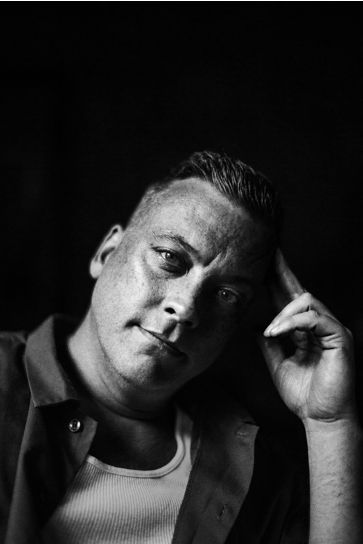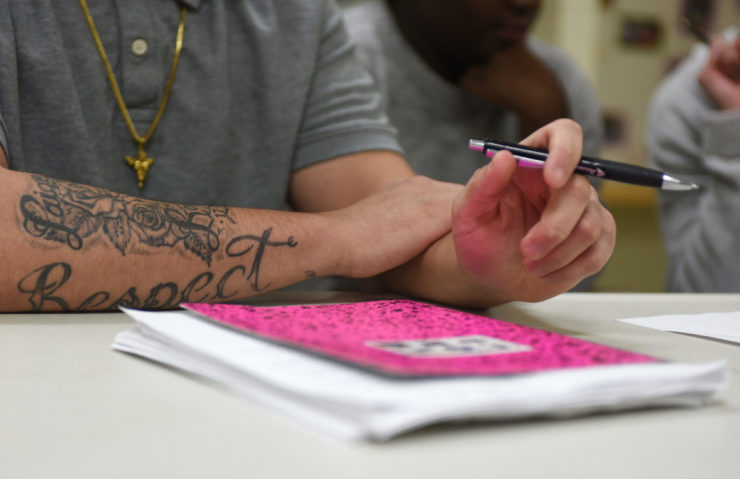
Editor's note: Reporter and teacher Shaheen Pasha (2018 Nieman Fellow) met John J. Lennon when she interviewed him for a larger package she did on writing programs and newspapers inside America's prisons. (Her in-depth report can be found at our colleague site, Nieman Reports.) Lennon, who is serving 28 years-to-life for murder, took writing classes for nine years at Attica Prison before he transferred to Sing Sing. He has since been published in several major publications, including The Atlantic, Esquire and The Marshall Project. At a request from Pasha, he wrote a letter to the writing class she was teaching at the Hampshire County Jail and House of Correction and gave us permission to share it here. We have inserted links to some of his references, but have not edited his vernacular: Terms like "peep," "tucking our chain," "rocking a ... cap" make perfect sense in context, as does his occasional use of a cuss word. The signatures of good writing.
***
9 March 2018
Hello from Sing Sing:

Shaheen (Pasha) asked me to share a few thoughts with you guys about writing from the inside. Many of you, I’m sure, have some wild tales to tell – shit you’ve lived, shit you’ve seen. That’s memoir, that’s journalism. That’s what Shaheen’s teaching you all. And homegirl is the real deal, not like the typical English professor who’s published a few things. Shaheen’s a Columbia Graduate School of Journalism alumni who’s written for big media companies, and now she’s a Harvard Nieman fellow creating this prison project.
Point is, you guys have quite an opportunity here to tap into your talents. Still, she’ll only be able to show you the tools; learning to build something with them takes practice and time and awareness of story. The good news is that you can tap into all of those elements in jail.
Keep in mind, that my style is mostly journalism meshed with a bit of memoir, but here are some tips:
- Know your rhetorical situation – purpose, context, audience – and know what kind of piece you’re gonna write – op-ed, personal/essay, reportage (maybe meshed with memoir).
- When it comes to writing for publication, you really have to think about the kind of story you want to tell. Are you in the best position to write it? Will people want to read it? Working on the right story at the right time is so important. I suggest finding the thread between a story you experienced or observed and a broader societal issue, which is called a peg. I did this with the first piece I published in The Atlantic, in which I write about how I killed a man with an illegal AR-15. The peg was the gun control debate; the Newtown school shooting was still fresh. It took many months of writing and rewriting before I submitted it. This shit ain’t easy.
- Develop your voice and watch your tone. Strive to be even handed. Hip the reader to our subculture but don’t romanticize it. You’ll lose cred. For personal essays be vulnerable but not phony. (Lopate’s intro in Art of the Personal Essay is excellent). Memoir and personal essay is dangerous writing. When I wrote The Murderer’s Mother, I knew it was time for a personal reckoning. Still, it was hard for me to unpack the murder head on, so I opened the story through my mother’s lens, in the second person, talking to readers who, at first, don’t know I’m the one telling the tale.
- A bit about prose. Shaheen is teaching you guys how to write prose that will hopefully be published in a lit review or magazine one day. That writing is different from academic prose. In fact, it breaks a lot of those traditional rules like never ending a sentence with a preposition or never using a sentence fragment. Thing is, most of us have never had a solid grammatical foundation to begin with. We’re autodidacts. So, it’s tricky because you kind of have to know the rules before you start breaking them. Good essayists and journalists play with prose on the page like Floyd Mayweather plays with his opponents in the ring. Smooth footwork. Flipping the jab. Whap, whap. Alliteration. Similes. Fragments. You’ll have to learn to layer these things in your writing, but do so gradually. Don’t force it. Having good prose is like a smooth swagger. Growing up, we picked up on different traits – rocking a fitted baseball cap, tucking our chain on the block, popping it out in the club, our bop, our game with girls – from older cats in our neighborhoods. It’s the same with writing – you swipe prose from different writers and develop your own style and voice. Last, breezy writing and big words are lame. Nouns and verbs should move sentences instead of adjectives and adverbs. Use an active voice, with the subject in the beginning of the sentence. Read and reread "On Writing Well" by William Zinsser and "Elements of Style" by Strunk & White; subscribe to craft mags like The Writer, Poets & Writers, Writer’s Digest.
- The most publishable stories nowadays, I think, are reportage features meshed with memoir. Also op-ed and first person pieces are hot. But aim for them to be between 900–1,500 words. With reportage, Shaheen is gonna teach you guys the structural stuff, opening with a strong anecdote to hook the reader, then a nut graf, which explains the story, then maybe a bit of history on the larger issue the story deals with. But another graf I would include is about you. Who are you? Why are you in jail? Did you do it? Where’d you learn to write? Why are you writing this story? Readers are nosey; they want to know this shit. So tell them. It’ll earn you ethos. Then get on with whatever your story is about.
- Another thing to consider about your story is access, narrative, disclosure, and conflict. Let’s apply these to a long feature I just co-published in TMP (The Marshall Project) and VICE about COs beating up prisoners in Attica. My access is the fact that I spent nearly nine years there and saw a lot of shit, and no one could have told that tale better than me. (Peep the opening anecdote, the nutgraf, the personal graf, the history graf.) The narrative is my ability to tell a story with an arc – a beginning, a middle and end – and flesh-and-blood characters. The disclosure is what I reveal to the reader about the culture at Attica. The conflict and the peg is my search for truth and justice, in a time when those things are quite relevant. There’s also a deeper conflict that arises when I ruminate about CO Pritchard – how it bothered me that he would never be punished for his actions while me and my peers are being defined by ours. And the paradox in the story may also create some conflict for the reader: a murderer in jail publishing an expose in a magazine with a huge audience, calling his jailers to the carpet. It’s unheard of.
- In the end, there are a lot of moving parts to this writing game. One last point I’d like to make, though, is that you have to read well to write well. So, if you can swing it, subscribe to The New Yorker, The Atlantic, Pacific Standard, Esquire, GQ, Vanity Fair. Peep the prose and the structure of the features. I’m sure Shaheen will bring in first-person essays from The Marshall Project and VOX and Narratively and VICE. Guys like us should strive to get published, because our voices are important and because the work itself will help us rebrand ourselves.
Stay up!
Cheers,
John J. Lennon



